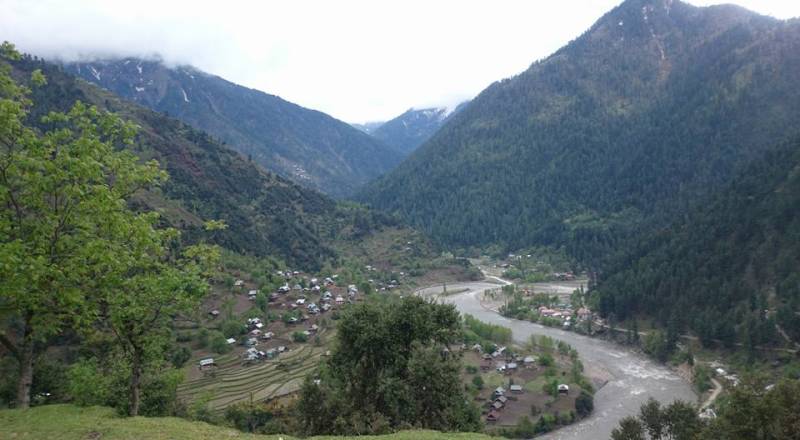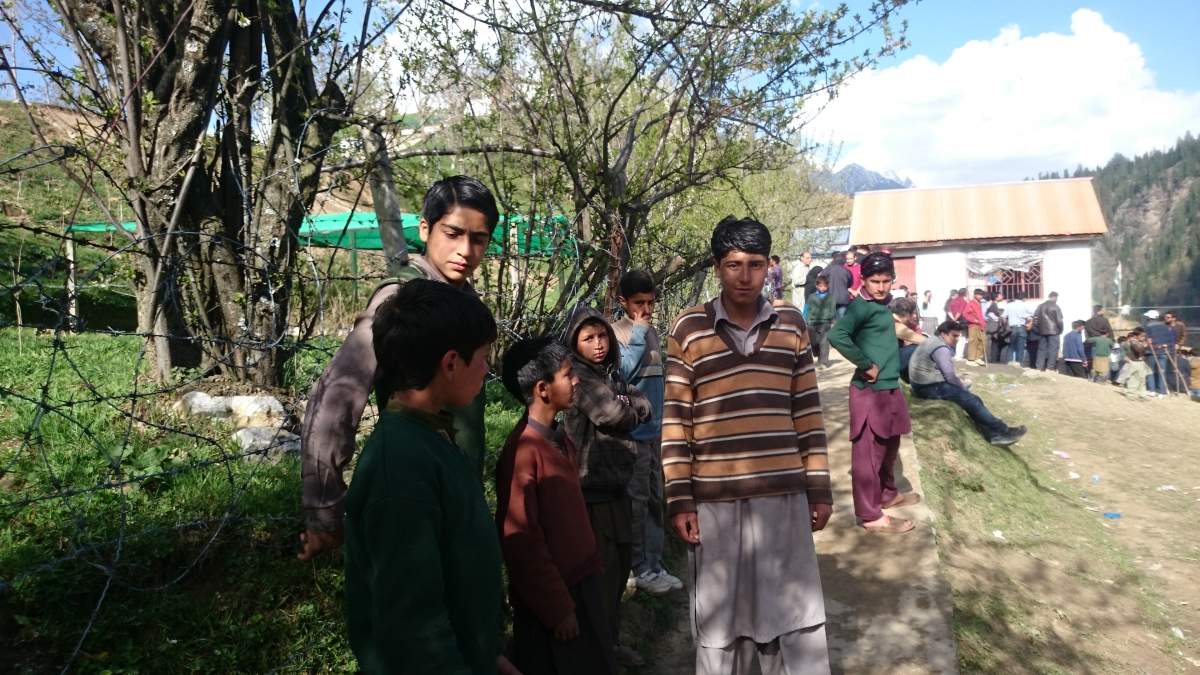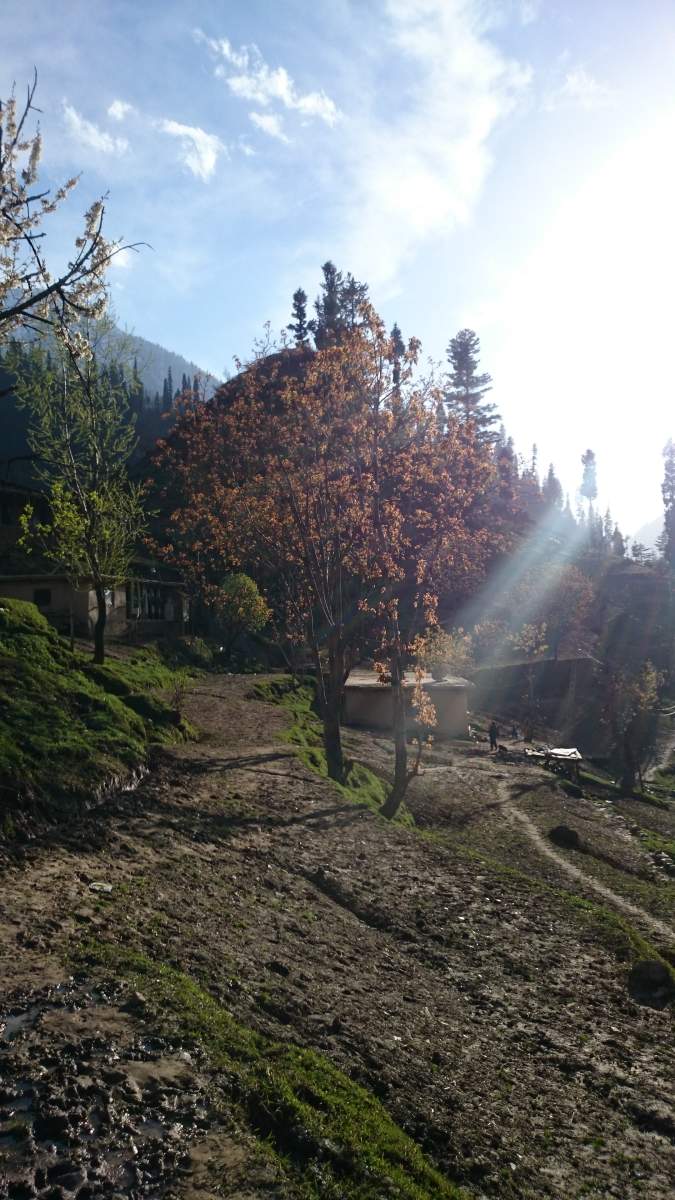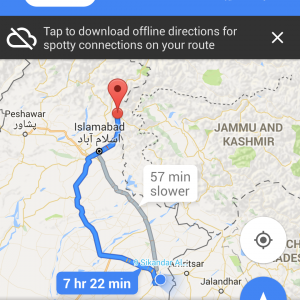Latest
A complete travel guide to the beautiful Neelum Valley


However, before getting excited about a trip to the Valley, there are some important things to remember...
Are you up to it?
There is quite a bit of hiking and trekking involved on any trip to Neelum Valley, and even some of the trails and dirt tracks can turn out be rather steep. Of special note is the trek from Kel to Arang Kel. Located at an altitude of over 8,300 feet above sea level, the village of Arang Kel is located on a mountain top opposite Kel, with a river and a valley separating the two. In order to reach Arang Kel, you have to trek down the mountain on which Kel is located, cross the river on a bridge, then climb another mountain to Arang Kel – a two kilometer journey. To facilitate tourists, a chairlift service operates from Kel at a cost of Rs. 100 per head, but this only takes you three-quarters of the way up to Arang Kel, which means that there is still a 40-minute climb ahead of you.

Therefore, do not attempt a trip to the Valley if you are unfit, suffer from a heart condition, or are at risk of one. Hospitals and emergency services are hours away. Discuss this trip with your doctor before you attempt it.
If you still want to attempt a hike, it is highly recommended that you use a sturdy hiking stick. You may find a group of children at Kel competing to rent one (or two) out to you for a price of Rs 30-50 each, depending on your negotiation skills, but it is better to take your own.

Make sure you take regular prescription medication with you. You may not be able to locate a pharmacy, and if you somehow manage to find one, it may not be as well-stocked as you would like. Also remember to take along painkillers, stomach pills, and any other medication that you think you may need.
Take your CNIC with you!
This may seem obvious, but believe me when I tell you that it is absolutely critical in the Neelum Valley. Due to the region's close proximity to India – at certain points you can catch a glimpse of an Indian army check post or two on the other side of the Neelum River - access to the region is restricted to Pakistani citizens. Others are obligated to present a No Objection Certificate (NOC) to gain access, but these are not easily obtained, and are treated with suspicion by inspecting officers. This makes it all the more important for you to be able to prove that you are indeed a Pakistani citizen, either by carrying a valid, original CNIC or a Pakistani passport.
Don't take this lightly. There are army check posts at several points, where you will be required to show your CNIC before you are allowed to pass through. Even large groups are not spared - at one check post, an army officer entered our bus and checked the CNICs of almost all the 27 occupants one by one, the only member of the group that was passed over being a two-year-old boy who could barely speak his own name. I managed to strike up a conversation with an army official and inquired about the acceptability of NICOPs, and was informed that they would only be considered acceptable if they had a Pakistani address on them. Yet, despite the fact that a friend of mine had such a NICOP, the tour operator I used was reluctant to include her, worried about possible problems.
Give yourself enough time for sightseeing
Many tour operators are promoting two-day or three-day tours to Neelum Valley. But you will need at least four to five days to thoroughly explore the valley without tiring yourself out, so before you sign up for any tour, carefully vet the itinerary to ensure that you have enough time for sightseeing. Keep in mind that Muzaffarabad is an eight to ten-hour drive away from Lahore (four to six hours from Islamabad), and it will be another four to five hours before you reach Keran (assuming you find the roads clear). Whether you opt for a tour operator or whether you go on your own, give yourself enough days to make the trip worthwhile without requiring you to spend the bulk of your trip on the road.

Personal care tips
As with all mountainous regions, the climatic conditions of the Himalayas are vastly different from those in the plains and in the cities, and may take city-dwellers completely off-guard. The rays of the sun are harsher, the air pressure is lower, and the temperature colder.
Therefore, unless you want to come home with a glorious sunburn, don't forget the sunblock at home. A minimum of SPF 50 is recommended.

Overexposure to the sun's UV rays can result in sunburned corneas, which can significantly impair vision for up to 48 hours. Since this condition is exacerbated by contact lenses, avoid wearing them during daylight hours. Protect your eyes from the sun's glare with a pair of tight-fitting sunglasses that won't easily fall off, or a pair of prescription sunglasses if necessary.
Pack moisturiser with you and use it liberally. The sun and the wind can seriously dehydrate your skin.
What to wear
Invest in a pair of comfortable trainers or hiking boots. Buy a new pair as the cushioning and soles of older shoes may wear out with time, affecting their grip.
Avoid clothing that constricts movement. Pin headscarves securely, and avoid flowing dupattas or shawls that will only get in your way. Stumbling over your dupatta at altitudes of 8,000 feet can prove to be fatal. Dress in layers of tight-fitting clothing and shed them as necessary according to the weather.
Food and drink
The dry weather and the close proximity to the sun put you at greater risk of dehydration. Drink three to four litres of water a day, mixing at least two of these with ORS. You may not feel thirsty, but drink anyway. Bottles of water may be obtained from the bazaars or the guest houses where you plan on staying, but do note that quite often this water has been bottled from a local stream.
Eat regularly, regardless of whether you feel hungry or not, to keep your energy levels up. Avoid salty snacks such as crisps or nimko which will only contribute to dehydration. Fruits and vegetables are your best bet. Keep sweets, candies or packets of juice at hand in case of dizzy spells or drops in sugar levels.
Mobile phone connectivity
There is no network coverage by any of the major mobile networks beyond the Neelum-Jhelum hydropower project, located some 22 km ahead of Muzaffarabad. Also, some networks do not offer 3G services in Azad Kashmir, so if you find your mobile phone has lost a signal during this part of the journey, switch it over to GSM-only mode or WCDMA/GSM mode about half an hour before you reach Muzaffarabad. It is highly recommended that you do so since this will be your last chance to communicate with your friends and family until your return.

The lack of connectivity makes it seem as if Neelum Valley is the perfect place to unwind and "get away from it all". However, there are understandably times when you want to let your friends and family know how you are. If this is a concern, you can purchase a SIM from one of the several franchises of state-owned/operated SCOM, a local telecommunications operator that provides Internet, landline and mobile phone services in Azad Kashmir and Gilgit Baltistan. This is the only mobile network that works in Neelum Valley, and top-up cards can be obtained from the bazaars. You will also find PCOs in the bazaar, enabling you to call home if required. A kind shopkeeper may even let you use his phone without expecting any payment in return. I found this out when I asked one of them to direct me to a PCO. He asked me to step inside, leading me to assume that there was a telephone installed in his shop. He then asked me to wait while he "made arrangements". After five minutes, he handed me his mobile phone, and I found out that he had only asked me to wait in order to enable him to top up his mobile phone balance. My attempts to reimburse him for the mobile phone card he had purchased on my account caused so much offense I was forced to apologise and retract my offer.
Navigation tips
Due to the lack of mobile phone coverage, Google Maps will not be available. It is therefore highly recommended to plan out your routes before you leave home. The Android version of Google Maps does offer the option to download routes so that they are available in offline mode. While this is a useful feature, you also need to keep in mind that weather conditions are unpredictable and the conditions of the roads are uncertain- this means that landslides and roadblocks can render the Google Maps routes useless. The locals are helpful, however, so if you do need directions, just ask.

This lack of connectivity also means that if you are separated from your travelling companions, you are going to have a very hard time trying to locate them. If you are in a small group, stick together. If you are in a larger group, agree on a meeting time and place and make sure everyone knows how to get there. If you arrive early, wait for the others to join you. Do not wander off!
Facilities at hotels and guest houses
While the local boom in tourism has resulted in guest houses cropping up all over the place, the dearth of utilities means that tourists will have a hard time of it if they are unprepared. None of the guest houses I stayed at had a regular supply of electricity, running water, or even gas to cook meals and to keep warm. Some guest houses are equipped with generators, but due to difficulties in obtaining fuel, these are used sparingly. Take a fully charged and reliable power bank with you to recharge your mobile phone. Do your research and buy a reputable brand, as cheap ones can damage your gadgets. A 20,000 mAH power bank, while it may seem a bit excessive to some, can fully charge a mobile phone up to five times, or a Kindle Fire HDX 7 up to three times.

Do not expect hotels to provide you with hot or even warm water. You will only get ice-cold water in the bathroom, so no matter how tired you feel, you may want to reconsider taking a shower. Some hotels or guest houses will oblige by providing you with buckets of hot water in return for payment, but this is not a service you can count on. If you do manage to get a bucket of hot water, it will not be long before it turns cold, so you need to be quick about using it.
Another thing you need to keep in mind is that not all hotels and guest houses are able to offer commodes, so anyone who is unable to use an Indian-style toilet may have to hunt around a bit for suitable accommodation.
You may need to dress in layers to keep warm at night. While hotels and guest houses will be able to provide you with a comfortable bed and blanket, they generally will not allow you to use heaters in your room, and they may not be able to provide extra blankets if they are fully booked. Since temperatures can drop to 4 or 5 degrees Celsius in April, and fall below zero in the winter, extra layers of clothing may be necessary.
ATMs and other amenities
Guest houses, restaurants, hotels, and retailers do not accept credit cards or debit cards. And since you will be hard-pressed to find ATMs in the valley, it is best to carry cash. The last stop at which you can count on finding ATMs is Muzaffarabad, so it is recommended to visit an ATM there before setting out for the Valley. Of course, if you are part of a tour group in which transportation, boarding, and meals have been paid for, you can get by with a smaller amount to cover miscellaneous expenses not included in the tour cost.
Expect the unexpected!
On my first trip to the Valley, a landslide blocked access to our destination, and we were forced to turn back without getting very far. On my second trip, the coach carrying us back to Lahore from Muzaffarabad broke down in the middle of the night and delayed our return by several hours. So remember that things don't always go according to plan, and you should be prepared for unexpected delays and cancellations.
Sufia is a marketing communication planner, blogger, creative content writer, and a part time Urdu translator. Sufia blogs at www.ameanderingelephant.com

Advertisement
-
Karachi's 'cool' assistant commissioner Hazim Bangwar spotted at Hum Style ...
11:15 PM | 12 May, 2024 -
Karachi board issues datesheet for Inter exams 2024
10:35 PM | 12 May, 2024 -
Pakistan hockey team receives a hero's welcome in Lahore for winning ...
10:05 PM | 12 May, 2024 -
Is Pakistan selling JF-17 Thunder fighter jets to Iraqi Air Force?
09:20 PM | 12 May, 2024 -
Gaza death toll tops 35,000; 15,000 children among victims of Israeli war ...
08:06 PM | 12 May, 2024
Currency Rates in Pakistan Today - Pak Rupee to US Dollar Open Market rates 12 May 2024
Pakistani rupee rates against US Dollar and other currencies on May 12, 2024 (Sunday) in open market.
USD to PKR rate today
US dollar was being quoted at 277.2 for buying and 279.7 for selling.
Euro stands at 296 for buying and 298.7 for selling while British Pound rate is 344 for buying, and 347.5 for selling.
UAE Dirham AED was at 75.1 and Saudi Riyal came down to 73.40.
Today’s currency exchange rates in Pakistan - 12 May 2024
| Currency | Symbol | Buying | Selling |
|---|---|---|---|
| US Dollar | USD | 277.2 | 279.7 |
| Euro | EUR | 296 | 298.7 |
| UK Pound Sterling | GBP | 344 | 347.5 |
| U.A.E Dirham | AED | 75.1 | 75.5 |
| Saudi Riyal | SAR | 73.40 | 74.10 |
| Australian Dollar | AUD | 180.5 | 182.5 |
| Bahrain Dinar | BHD | 739.61 | 747.61 |
| Canadian Dollar | CAD | 203 | 205 |
| China Yuan | CNY | 38.43 | 38.83 |
| Danish Krone | DKK | 40.16 | 40.56 |
| Hong Kong Dollar | HKD | 35.6 | 35.95 |
| Indian Rupee | INR | 3.34 | 3.45 |
| Japanese Yen | JPY | 1.91 | 1.99 |
| Kuwaiti Dinar | KWD | 904.67 | 913.67 |
| Malaysian Ringgit | MYR | 58.71 | 59.31 |
| New Zealand Dollar | NZD | 166.93 | 168.93 |
| Norwegians Krone | NOK | 25.69 | 25.99 |
| Omani Riyal | OMR | 722.52 | 730.52 |
| Qatari Riyal | QAR | 76.44 | 77.14 |
| Singapore Dollar | SGD | 204 | 206 |
| Swedish Korona | SEK | 25.79 | 26.09 |
| Swiss Franc | CHF | 306.4 | 308.9 |
| Thai Bhat | THB | 7.56 | 7.71 |
Advertisement
Lifestyle
Blogs
- Who is the most followed Pakistani actor on Instagram? 09:55 PM | 3 Apr, 2024
- Forbes 2024 List of World's Billionaires is out now: Taylor Swift, ChatGPT founder enter elite ranks 12:12 PM | 3 Apr, 2024
- 10 Top Google searches made by Pakistanis in 2024 09:36 PM | 20 Mar, 2024
- Pakistan's ranking improves by 7 spots in Transparency International Corruption index 01:52 PM | 30 Jan, 2024
- Pakistan Army ranked among top 10 strongest militaries in the world 01:42 PM | 17 Jan, 2024
- Celebrity weddings in 2023 08:59 PM | 26 Dec, 2023
Follow us on Facebook
Follow us on Twitter
Sign up for Newsletter
Copyright ©2024. Reproduction of this website's content without express written permission from 'Daily Pakistan' is strictly prohibited.
